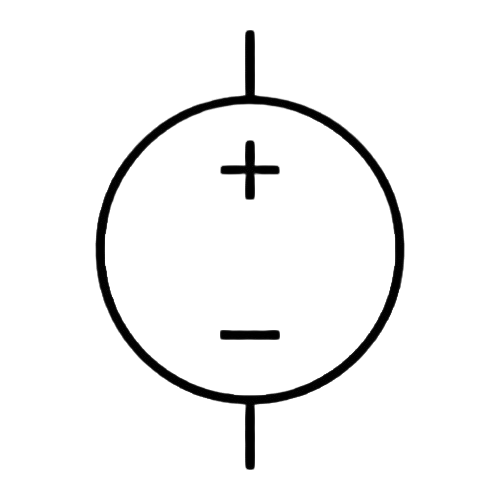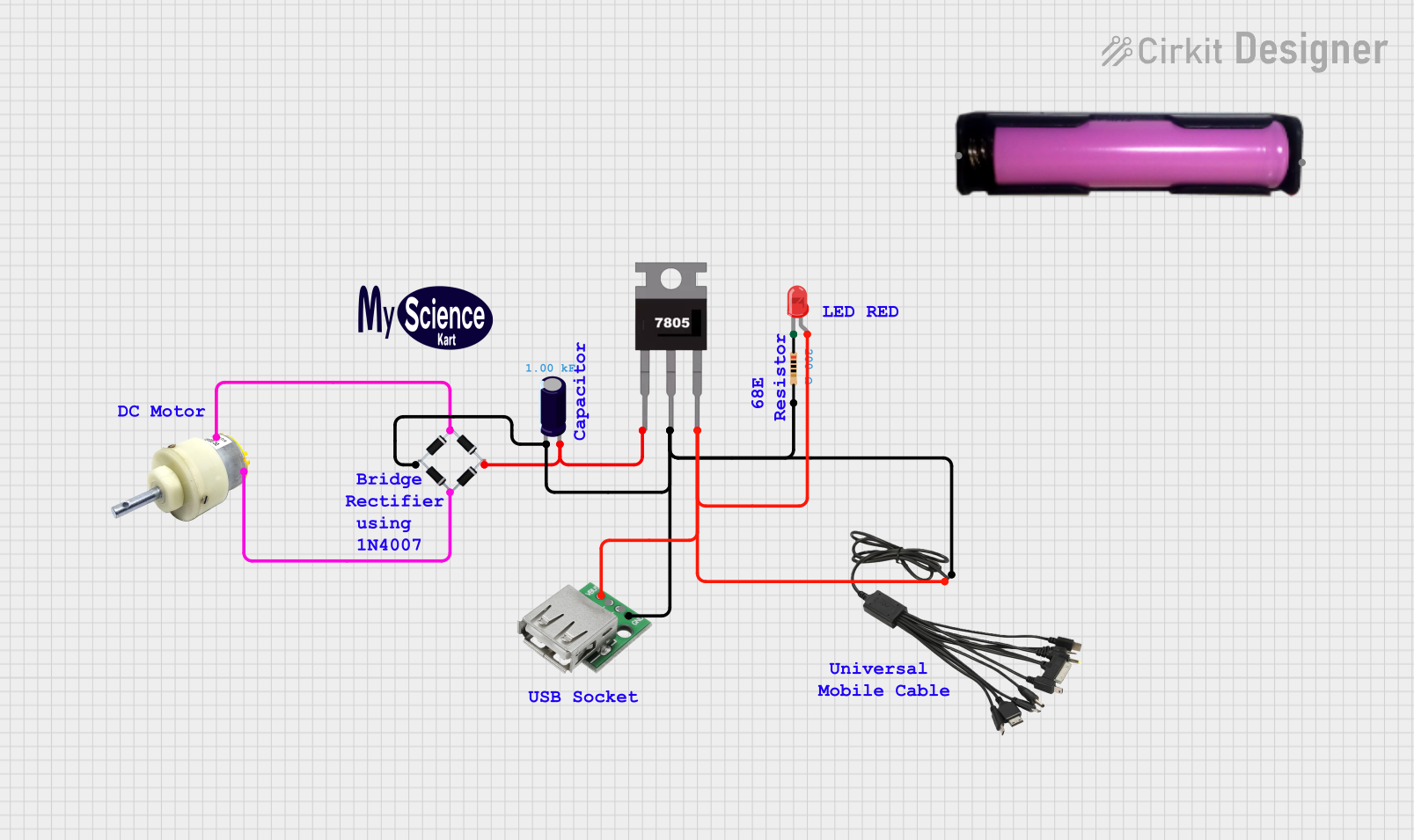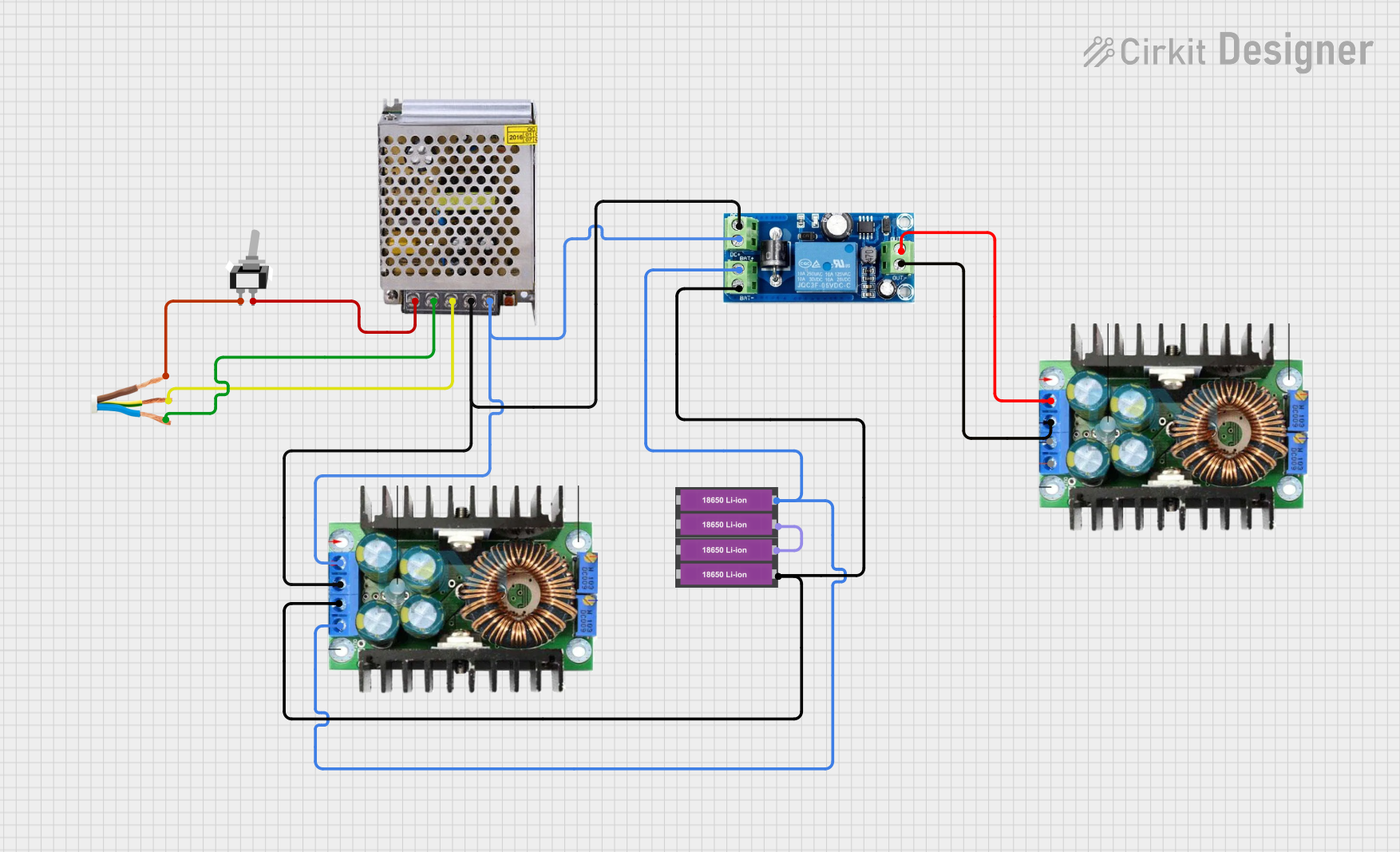
How to Use DC Power Source: Examples, Pinouts, and Specs

 Design with DC Power Source in Cirkit Designer
Design with DC Power Source in Cirkit DesignerIntroduction
The DC Power Source (Manufacturer: JJY, Part ID: DC_Power) is a device designed to provide a stable and constant direct current (DC) voltage. It is an essential component in powering electronic circuits, modules, and devices that require a reliable DC supply. This component is widely used in prototyping, testing, and powering embedded systems, sensors, and microcontrollers.
Explore Projects Built with DC Power Source

 Open Project in Cirkit Designer
Open Project in Cirkit Designer
 Open Project in Cirkit Designer
Open Project in Cirkit Designer
 Open Project in Cirkit Designer
Open Project in Cirkit Designer
 Open Project in Cirkit Designer
Open Project in Cirkit DesignerExplore Projects Built with DC Power Source

 Open Project in Cirkit Designer
Open Project in Cirkit Designer
 Open Project in Cirkit Designer
Open Project in Cirkit Designer
 Open Project in Cirkit Designer
Open Project in Cirkit Designer
 Open Project in Cirkit Designer
Open Project in Cirkit DesignerCommon Applications and Use Cases
- Powering microcontrollers (e.g., Arduino, Raspberry Pi)
- Supplying voltage to sensors, actuators, and modules
- Testing and prototyping electronic circuits
- Charging batteries and powering portable devices
- Providing a stable DC voltage for industrial and laboratory equipment
Technical Specifications
The following table outlines the key technical specifications of the JJY DC Power Source:
| Parameter | Value |
|---|---|
| Input Voltage Range | 100-240V AC, 50/60Hz |
| Output Voltage Range | 3.3V, 5V, 9V, 12V (selectable) |
| Output Current | Up to 2A |
| Power Rating | 24W (maximum) |
| Voltage Regulation | ±1% |
| Ripple and Noise | <50mV |
| Operating Temperature | -10°C to 50°C |
| Dimensions | 100mm x 60mm x 40mm |
| Weight | 150g |
Pin Configuration and Descriptions
The DC Power Source typically includes the following connectors and terminals:
| Pin/Connector | Description |
|---|---|
| Input AC Terminal | Connects to the AC mains (100-240V AC) |
| Output DC Terminal (+) | Positive DC output terminal |
| Output DC Terminal (-) | Negative DC output terminal (ground) |
| Voltage Selector Switch | Allows selection of output voltage (3.3V, 5V, etc.) |
| Power Indicator LED | Indicates when the power source is active |
Usage Instructions
How to Use the DC Power Source in a Circuit
- Connect the Input: Plug the AC input terminal into a standard wall outlet (100-240V AC).
- Set the Output Voltage: Use the voltage selector switch to choose the desired output voltage (e.g., 5V for Arduino projects).
- Connect the Load: Attach the positive (+) and negative (-) output terminals to the corresponding terminals of your circuit or device.
- Power On: Turn on the power source. The power indicator LED will light up, confirming the device is active.
- Verify Output: Use a multimeter to confirm the output voltage before connecting sensitive components.
Important Considerations and Best Practices
- Voltage Selection: Always ensure the selected output voltage matches the requirements of your circuit to avoid damage.
- Current Limitations: Do not exceed the maximum output current (2A) to prevent overheating or damage.
- Polarity: Double-check the polarity of the connections to avoid reversing the positive and negative terminals.
- Ventilation: Ensure proper ventilation around the power source to prevent overheating during prolonged use.
- Safety: Avoid touching the AC input terminals while the device is powered on.
Example: Using the DC Power Source with an Arduino UNO
To power an Arduino UNO using the DC Power Source, follow these steps:
- Set the output voltage to 5V using the voltage selector switch.
- Connect the positive (+) terminal of the power source to the 5V pin on the Arduino.
- Connect the negative (-) terminal of the power source to the GND pin on the Arduino.
- Power on the DC Power Source. The Arduino should boot up and be ready for use.
Sample Arduino Code
Here is an example of a simple Arduino sketch to blink an LED while powered by the DC Power Source:
// This code blinks an LED connected to pin 13 of the Arduino UNO.
// Ensure the DC Power Source is set to 5V and properly connected.
void setup() {
pinMode(13, OUTPUT); // Set pin 13 as an output pin
}
void loop() {
digitalWrite(13, HIGH); // Turn the LED on
delay(1000); // Wait for 1 second
digitalWrite(13, LOW); // Turn the LED off
delay(1000); // Wait for 1 second
}
Troubleshooting and FAQs
Common Issues and Solutions
| Issue | Possible Cause | Solution |
|---|---|---|
| No output voltage | Power source not plugged in or turned off | Check the AC connection and power switch |
| Incorrect output voltage | Voltage selector switch set incorrectly | Verify and adjust the voltage selector switch |
| Device overheating | Exceeding maximum current rating | Reduce the load or use a higher-rated power source |
| Ripple or noise affecting the circuit | Poor grounding or interference | Ensure proper grounding and use decoupling capacitors |
| Power indicator LED not lighting up | Internal fault or no AC input | Check the AC input and contact support if needed |
FAQs
Can I use this power source to charge a battery?
- Yes, but ensure the output voltage and current are compatible with the battery's specifications.
What happens if I exceed the maximum current rating?
- The power source may overheat or shut down to protect itself. Always stay within the specified limits.
Is the output voltage adjustable?
- Yes, the voltage selector switch allows you to choose between 3.3V, 5V, 9V, and 12V.
Can I use this power source outdoors?
- No, this device is not weatherproof. Use it only in dry, indoor environments.
By following this documentation, you can safely and effectively use the JJY DC Power Source (DC_Power) in your electronic projects.